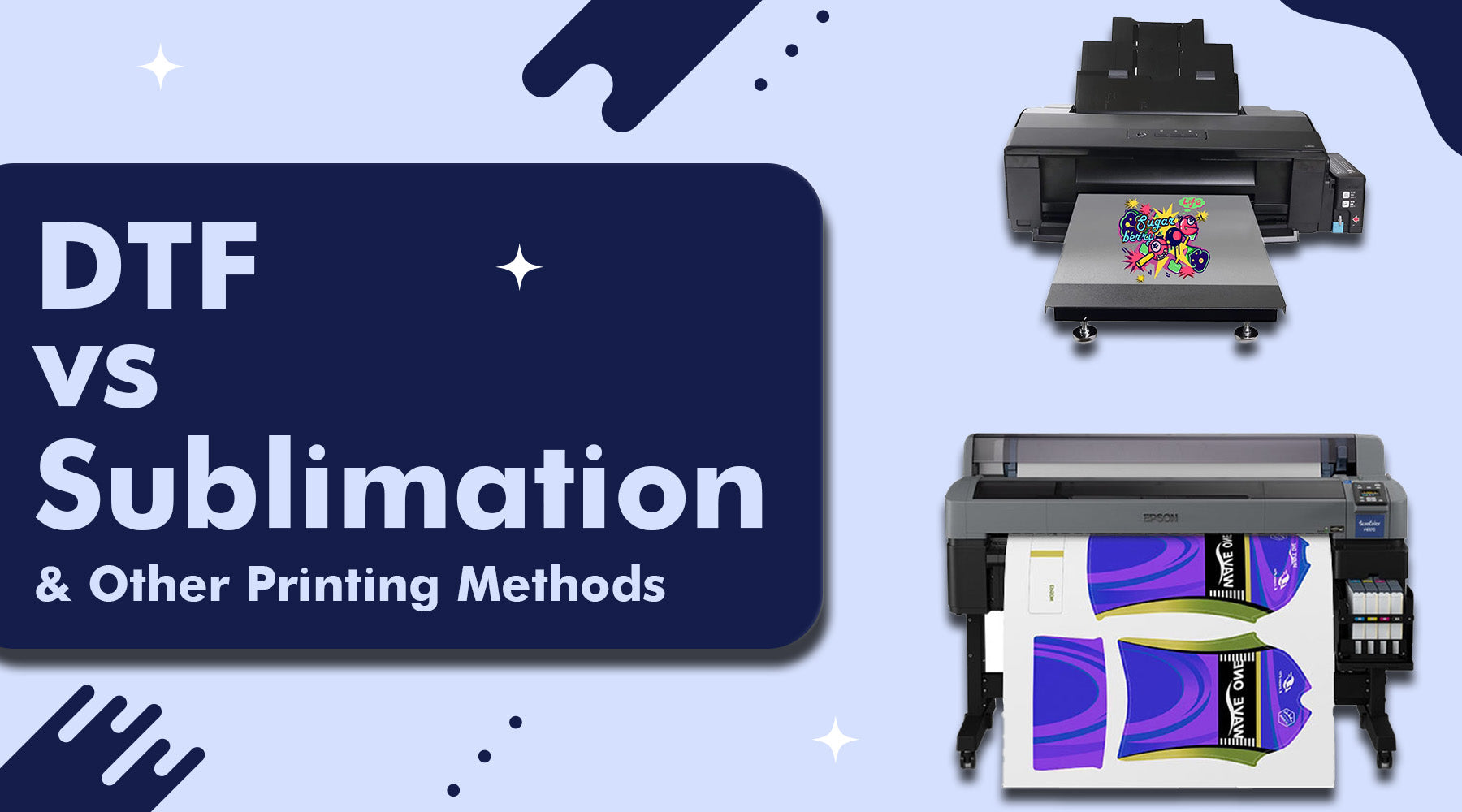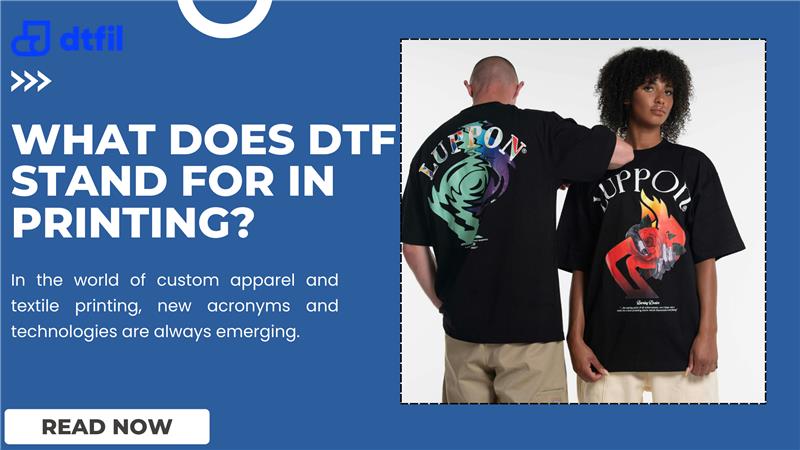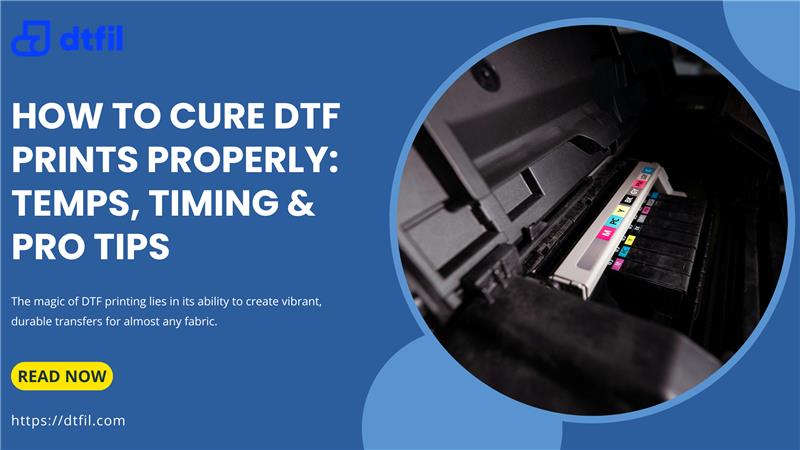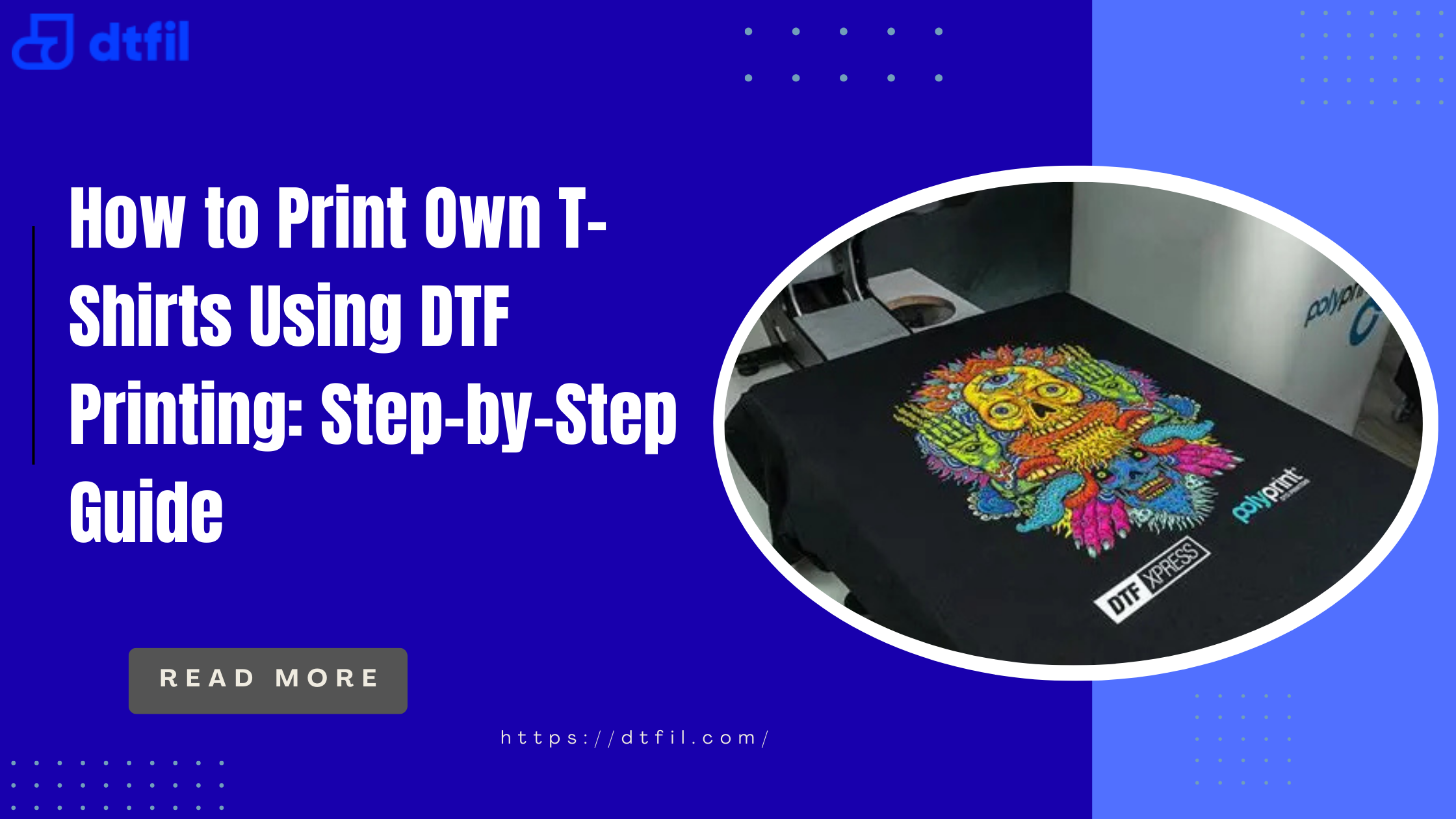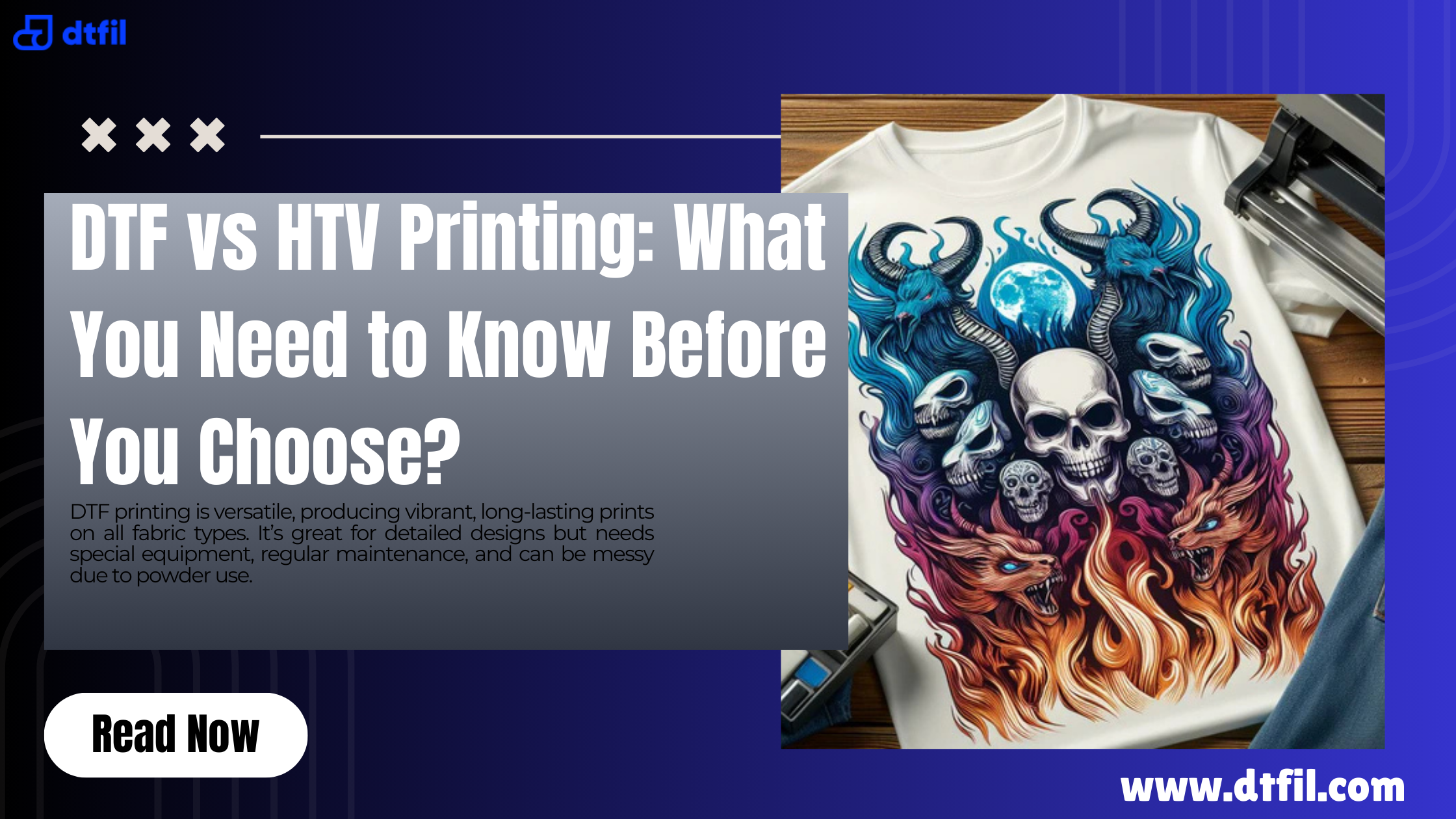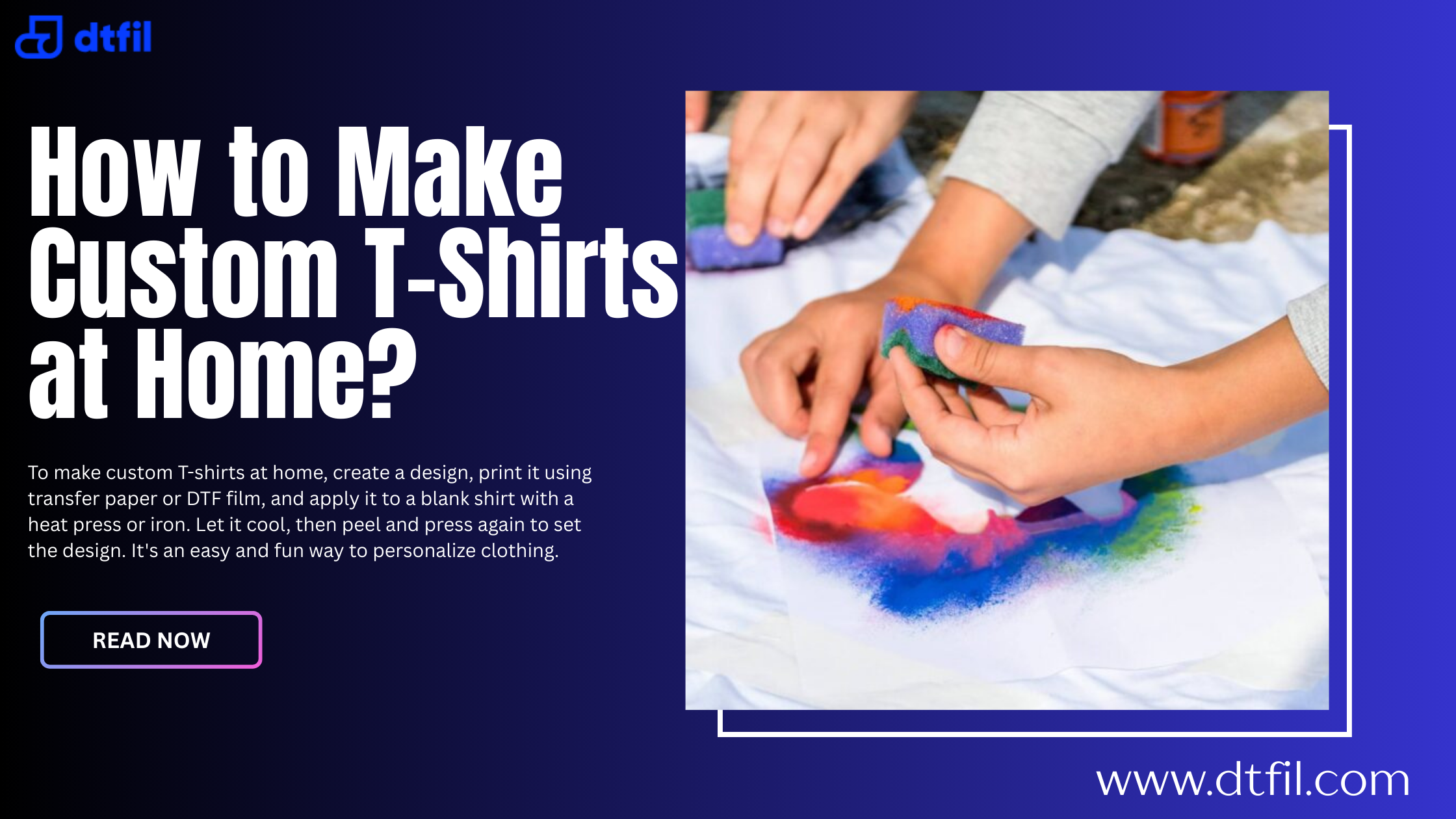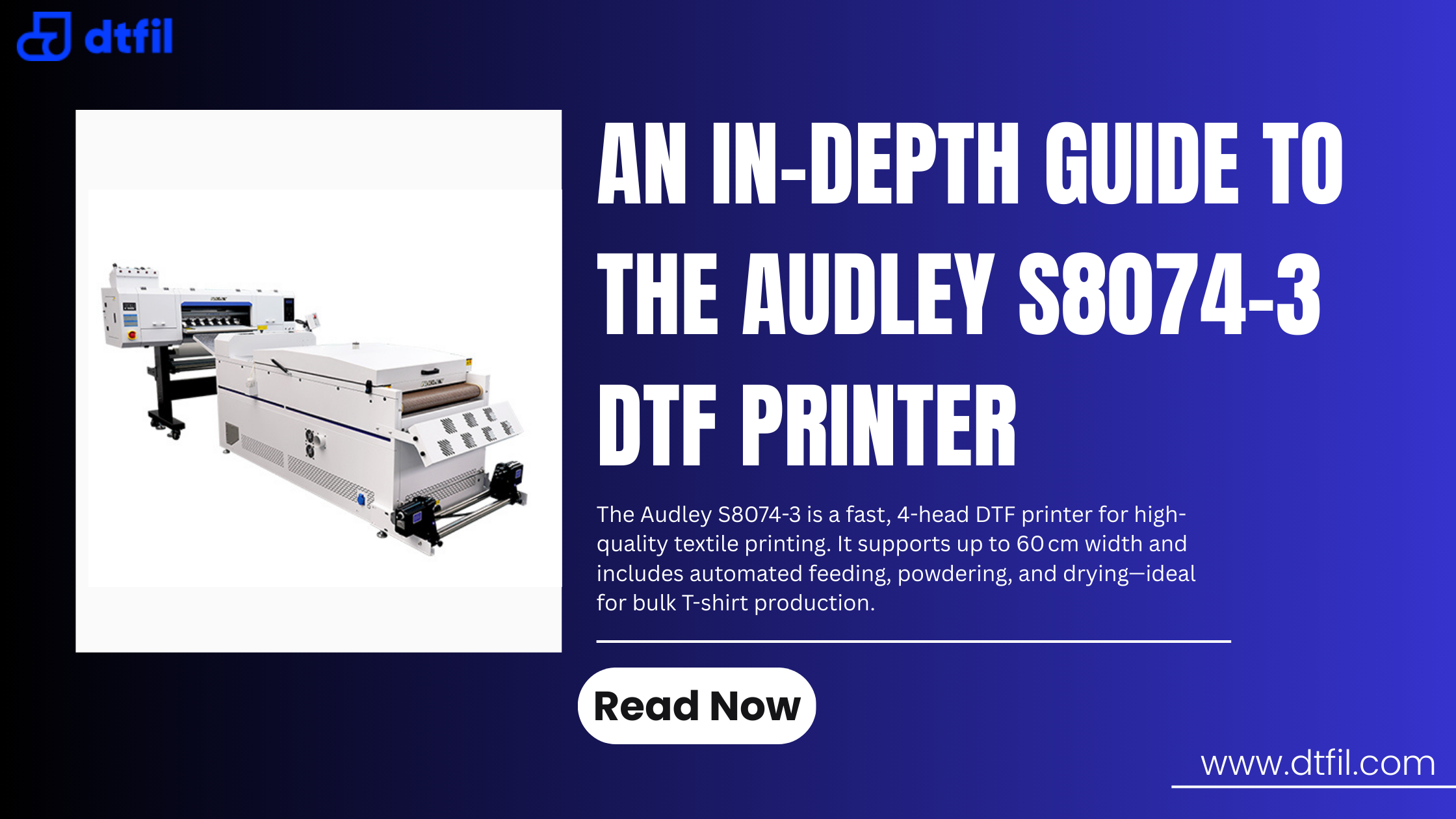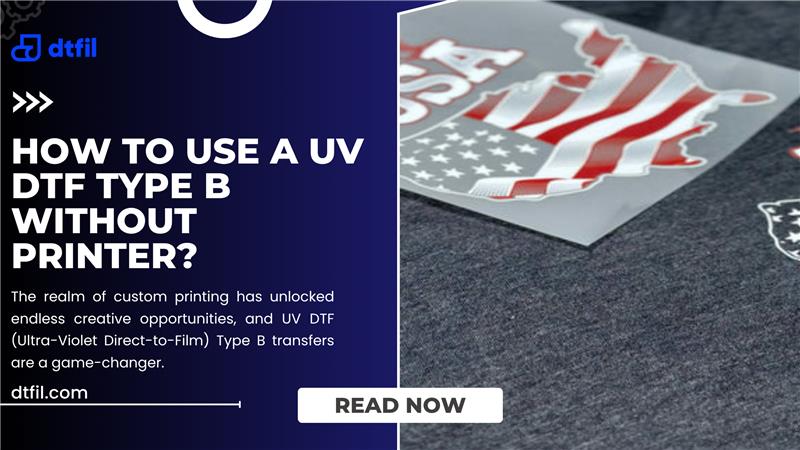Techniques such as DTF (direct-to-film), sublimation, DTG (direct-to-garment), or screen printing each provides strengths in the printing world and the print industry has come a long way and will continue to do so. Some of the following have seen a lot of interest, especially amongst them are the DTF transfers that have been very sturdy, vibrant, and relatively simple to make as they can work on a variety of fabrics.
In this blog, we will compare DTF vs sublimation and other printing methods, highlighting the benefits of DTF, and guiding you in choosing the best method for your needs.
How Does DTF Compare to Sublimation?
When talking about DTF vs Sublimation, the strengths and the weaknesses of both should be discussed.
- Fabric Flexibility: DTF printing is capable of working on a variety of fabrics, as it works very well with cotton, polyester, silk, and many blends. In contrast to sublimation which only works on polyester or coated polyester material.
- Color Quality and Durability: This white ink layer on the DTF transfer provides superb vibrant and durable prints, particularly with dark garments when compared to sublimation. Printing through sublimation produces high-quality prints but has difficulty with dark fabrics.
- Versatility: Although sublimation can be used on rigid items such as mugs and phone cases, DTF is especially helpful for printing on almost every material without the use of additives.
Also Read: What is UV DTF Transfers? Why It’s the Hottest Trend in Printing
Exploring DTF Transfer vs Sublimation
DTF transfer vs sublimation is a frequent discussion among printing professionals. Here's a closer look at how these two methods differ:
- Printing on Dark Garments: Sublimation printers aren’t as good on dark materials with bright colors, whereas DTF excels at printing on dark fabrics with brilliant colors.
- Durability: The most common thing about DTF prints is their durability, which has a better chance of struggling over the sublimation prints, particularly in the case mentioned above.
- Ease of Use: Unlike sublimation, DTF needs less pre-treatment and is easier to apply.
DTF vs DTG: Understanding the Differences
The debate between DTF vs DTG (Direct-to-Garment) highlights important differences in fabric compatibility, the application process, and durability.
- Fabric Compatibility: Unlike DTG, DTF works on almost everything, while DTG works best on cotton. DFT is a more versatile option when making an object for printing on different materials.
- Pre-Treatment: Like DTF, DTG requires pre-treatment for dark clothes, which means the DTG process is less time-consuming and somewhat less hassle.
- Durability: The layer printing process associated with DTF transfers means they are, in general, more durable, and more resistant to fading, than the DTG prints you can get elsewhere.
Also Read: How to Print DTF Transfers: Tips for Long-Lasting Designs
DTF vs Screen Printing: Which is Better for Your Needs?
Screen printing has been the go-to option for many years, particularly for bulk printing orders. However, dtf vs screen printing offers a fresh perspective.
- Setup Costs: Screen printing though is more expensive since as the name implies, it can't be set up as cheaply as the DTF involved.
- Customization: DTF gives designers more detail in their designs and more vivid colors than screen prints.
- Fabric Flexibility: Flat, single-color designs, on cotton fabrics, work really well with screen printing, while DTF is perfect with those complex, multi-color designs on a wide range of fabrics.
The Benefits of DTF: Why It’s a Game-Changer
There are numerous benefits of DTF printing, making it a highly desirable method for both small businesses and larger operations.

- Works on Various Fabrics: Compared to sublimation or DTG, DTF can print on cotton, polyester, silk, leather, and even more. It’s incredibly versatile and perfect for many different projects.
- No Pre-Treatment Required: With DTF, you don’t have to pre-treat fabrics, saving time and energy. The main advantage such as over DTG where you need pre-treatment for darker fabrics.
- Vibrant Colors on Dark Fabrics: As a base layer, white ink is used in DTF, an ink, and, because of this, it offers outstanding color vibrancy on dark-colored garments. That way designs stay eye-catching over time.
- Cost-Effective for Small Orders: Being a cost-effective screen printing alternative, DTF doesn’t have the high setup costs that screen printing has.
Sublimation vs Heat Transfer vs DTF: What’s the Difference?
When comparing heat press vs DTF, it’s important to note that heat presses are tools used to apply DTF designs. However, they are also used for other techniques like heat transfers. Here's a breakdown:
- Sublimation vs Heat Transfer: Sublimation directly embeds ink into materials like polyester, whereas heat transfer applies designs using heat-activated adhesive.
- DTF vs Heat Transfer: DTF offers more vibrant, durable prints compared to traditional heat transfers, which may peel or fade over time.
Also Read: What Does DTF Transfer Mean? How It’s Transforming Custom Printing
Conclusion
After understanding the differences between dtf vs sublimation, dtf vs dtg, and dtf vs screen printing, it’s clear that DTF printing is a standout option for versatility, color vibrancy, and durability. Whether you’re a small business owner or a DIY enthusiast, DTF offers flexibility without sacrificing quality. To explore our high-quality DTF printing, visit DTFIL today and take your printing projects to the next level!
FAQs
What is the difference between DTF and digital printing?
DTF prints designs on a special film and transfers them onto fabric using a heat press. Digital printing (like DTG) prints directly onto fabric. DTF is more versatile and works on various fabrics, while digital printing often works best on cotton.
Is direct to film or direct-to-garment better?
DTF is generally better for printing on multiple fabric types and is more durable. DTG is ideal for soft, natural-feeling prints but works best on cotton and light-colored fabrics.
What is the difference between DTF and DTG texture?
DTF prints have a slightly raised texture, whereas DTG prints feel softer and more natural since they are embedded directly into the fabric.
Which is better, sublimation or DTF?
DTF is more versatile, working on a wide range of materials including dark fabrics, while sublimation works best on polyester and light-colored fabrics. Both methods are durable but serve different purposes.
Does DTF last as long as sublimation?
Yes, DTF prints are highly durable and last just as long as sublimation prints when properly cared for, retaining their quality through multiple washes.
Can I use my sublimation printer for DTF?
No, you need a specialized DTF printer and film for the process. Sublimation printers are designed for a different type of ink transfer and won’t work for DTF.
Is sublimation better than heat transfer?
Sublimation offers softer prints and is best for polyester fabrics, while heat transfer (especially with DTF) allows for more vibrant colors on a variety of fabric types, including cotton.
